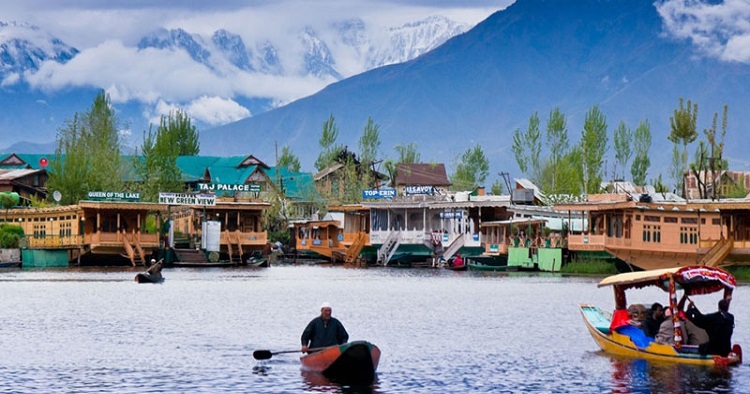+ 91 9654556824 | enquiry@ithtravels.com
+ 91 9654556824 | enquiry@ithtravels.com

| |
PICK UP FROM SRINAGAR AIRPORT- SRINAGAR LOCAL SIGHTSEEING - / SHIKARA RIDE |
|
Pick Up Srinagar Airport Procced to Hotel , Srinagar Local Sightseeing See Mughal Gardens :- Visit Shankar Acharya Temple (built on the top of the mountain overlooking Dal Lake) then visit to Pari Mahal (Palace of Fairies) Cheshma Shahi (Mughal Spring), Nishat Garden known as 'Garden of pleasure' built in 16th century (1633) by Mughal King Asif Khan. Then visit Shalimar Garden known as 'Garden of love' built in 16th century (1619) by Mughal King Jehangir for his beloved wife Noor Jehan or (Mehr-un-Nissa) you will also enjoy SHIKARA RIDE on world famous Dal Lake in which you will cover, Floating Gardens, Vegetable Gardens, Golden Lake, Inner markets like Mena Bazar, and Canals etc, also enjoy the scenic view of Zabarwan Mountains, overnight stay in Hotel at Srinagar.
| |
SRINAAGR – SONAMARG – SRINAGAR |
|
After breakfast leave for Sonamarg for a Day trip the name Sonamarg is derived from two Kashmiri words “Son” & “Marg” which mean “Gold” & “Meadow”, when put together it means “Meadow of Gold” The drive from Srinagar to Sonamarg is very beautiful as you will pass through some towns and villages, at many places you can enjoy the view of paddy fields with rivers flowing on one side. in Sonamarg you can visit Thajwas Glacier which is around 4Kms from Sonamarg a Local Taxi Or Pony Ride has to be hired (on your own Expenses) return back to Srinagar in the evening after enjoyed your day, overnight stay in Hotel at Srinagar.
| |
SRINAGAR – GULMARG –SRINAGAR |
|
After breakfast leave for Gulmarg “Meadow of Flowers” Discovered by the Kashmiri romantic poet in the 16th century who was inspired with its grassy slopes covered with wild flowers. In winter Gulmarg looks more beautiful due to heavy snow fall. And turns into India's premier Ski resort in winter.Gulmarg has one of the best ski slopes in the world and highest golf course with 18 holes, enjoy your day by gondola ride ( on your own Expenses).evening free for leisure, overnight stay in Hotel at Srinagar.
| |
SRINAGAR – PAHALGAM –SRINAGAR |
|
Srinagar to Pahalgam “Valley of Shepherds” via en route sightseeing visit Awantipura Ruins, Saffron Fields and Cricket Bat Factories, continue drive towards Pahalgam, Pahalgam is the most famous place for Indian Film Industry. in Pahalgam you can also visit Betaab valley (Betaab Valleyis situated at a distance of 15 kilometers from Pahalgam he valley got its name from the Sunny Deol-Amrita Singh hit debut film Betaab.The valley surrounded by lush green meadows, snow clad mountains and covered with dense vegetation) and Aru Valley(Aru Valley is a small yet self-sufficient scenic village located 12 km from Pahalgam) or you can visit Chandanwari (Is situated at a distance of 16 km from Pahalgam, is the starting point of the yatra that takes place every year in the month of (July to August) A local Taxi has to be hired for these beautiful places (own your own expenses) return back to Hotel after enjoyed your day, evening free for leisure,, overnight stay in Hotel at Srinagar.
| |
DEPARTURE TO SRINAGAR AIRPORT |
|
After breakfast at Hotel you will be proceed to Srinagar Airport to catch your Flight for your onward destination with sweet holiday Memories.
Jammu and Kashmir was a region formerly administered by India as a state from 1954 to 2019, constituting the southern and southeastern portion of the larger Kashmir region, which has been the subject of a dispute between India, Pakistan and China since the mid-20th century. The underlying region of this state were parts of the former princely state of Jammu and Kashmir, whose western districts, now known as Azad Kashmir, and northern territories, now known as Gilgit-Baltistan, are administered by Pakistan. The Aksai Chin region in the east, bordering Tibet, has been under Chinese control since 1962.
After the Government of India repealed the special status accorded to Jammu and Kashmir under Article 370 of the Indian constitution in 2019, the Parliament of India passed the Jammu and Kashmir Reorganisation Act, which contained provisions that dissolved the state and reorganised it into two union territories – Jammu and Kashmir in the west and Ladakh in the east, with effect from 31 October 2019.[7] At the time of its dissolution, Jammu and Kashmir was the only state in India with a Muslim-majority population.